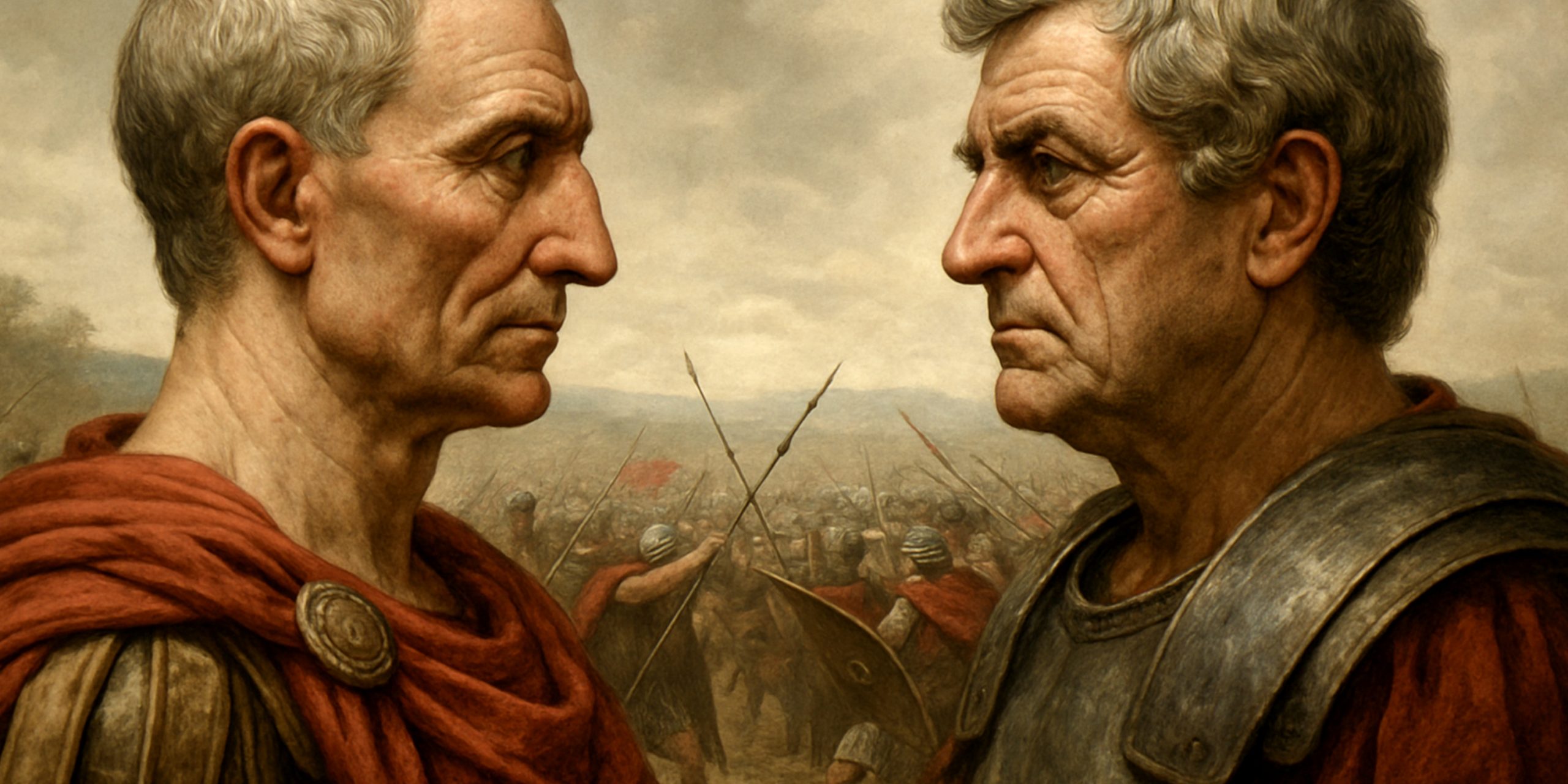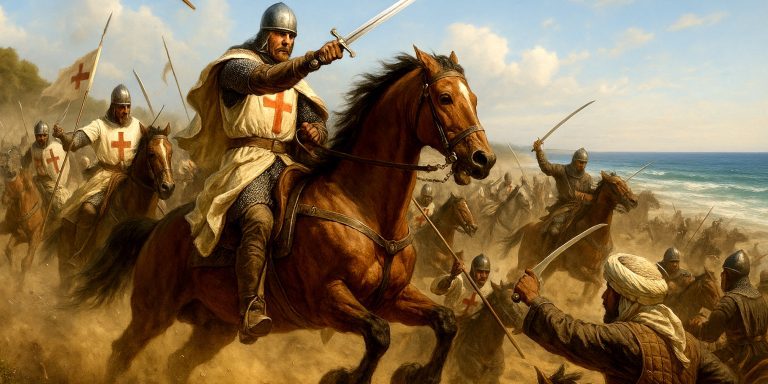
The Battle of Pharsalus, fought on 9 August 48 BC in central Greece, was the decisive clash between Julius Caesar and Pompey Magnus during the Roman Civil War. Caesar, despite being heavily outnumbered, achieved a resounding victory that reshaped the Roman Republic and paved the way for his rise to sole power.
Background
The Roman Republic had been torn apart by rivalry between Caesar and the Senate, represented by Pompey. After crossing the Rubicon in 49 BC, Caesar advanced rapidly through Italy, forcing Pompey and the senatorial forces to withdraw to Greece. The campaign culminated in Thessaly, where Pompey deployed his superior numbers in the plains near Pharsalus.
Forces
Caesar faced considerable numerical disadvantage, yet his veteran soldiers and innovative tactics balanced the odds.
| Side | Commander | Estimated Strength | Notes |
|---|---|---|---|
| Caesarians | Julius Caesar | c. 22,000 infantry, 1,000 cavalry | Seasoned legions from the Gallic Wars, weakened by fatigue and lack of supplies |
| Pompeians | Gnaeus Pompeius Magnus | c. 45,000 infantry, 7,000 cavalry | Larger force supported by eastern allies, with cavalry superiority |
Leaders and Troop Composition
Julius Caesar’s Forces
- Infantry: 80 cohorts, many veterans of Gaul
- Cavalry: Limited in number, largely Gallic and German auxiliaries
- Command Structure: Legates including Mark Antony, Domitius Calvinus, and Publius Cornelius Sulla
Pompey’s Forces
- Infantry: Drawn from Italy, Spain, and eastern provinces
- Cavalry: Dominated by eastern contingents under Titus Labienus
- Allies: Kings of the eastern Mediterranean, including Deiotarus of Galatia
Arms and Armour
Both armies were equipped in typical late Republican style.
- Infantry:
- Gladius Hispaniensis (short sword) for close combat
- Pilum (heavy javelin) for initial volleys
- Scutum (rectangular shield)
- Armour: mail shirts (lorica hamata) and bronze helmets (Montefortino and Coolus types)
- Cavalry:
- Spears and short swords
- Round shields
- Lighter armour, with eastern auxiliaries often relying on mobility
- Commanders: Wore ornate muscle cuirasses and crested helmets, serving as symbols of rank as much as protection
Battle Timeline
- Dawn: Both armies line up on the plain of Pharsalus. Caesar positions his outnumbered cavalry against Pompey’s massive mounted force but secretly supports them with hidden infantry.
- Morning: Initial skirmishes. Pompey orders his cavalry, led by Labienus, to crush Caesar’s flank.
- Decisive Phase: Caesar’s concealed cohorts rush forward, striking Pompey’s cavalry in the flanks and faces, breaking their formation. The cavalry routs, exposing Pompey’s infantry line.
- Infantry Clash: Caesar’s veterans press the attack. Despite being fewer, their discipline drives back Pompey’s legions.
- Collapse: Pompey flees the battlefield, abandoning his army. Caesar takes the enemy camp soon after.
Contemporary Quotes
- Julius Caesar, Commentarii de Bello Civili:
“Our men, though pressed by a greater multitude, fought not for advantage but for survival, and thus with greater valour.” - Plutarch, Life of Pompey:
“Pompey, struck with consternation at this unexpected overthrow, retired silently to his tent, sat down, and uttered not a word until at last he said: ‘What, to enter the camp even now!?’”
Archaeology
The exact battlefield location has been debated, though the traditional site is near the modern town of Farsala in Thessaly. Surveys in the region have uncovered Roman coin hoards dating to the 1st century BC, sling bullets, and fragments of military equipment, although direct confirmation of the battle site remains elusive. The open plain terrain matches ancient descriptions, lending support to the traditional identification.
Outcome and Legacy
Caesar’s victory at Pharsalus ended organised resistance from Pompey and the Senate’s main army. Pompey fled to Egypt, where he was assassinated upon arrival. Caesar emerged as the dominant figure in Roman politics, but his victory also deepened fears of autocracy, setting the stage for his eventual assassination in 44 BC.
The battle demonstrated Caesar’s ability to outmanoeuvre larger forces with tactical innovation and disciplined troops. It remains one of the defining moments of Roman military history.
Watch the documentary:



